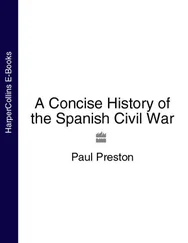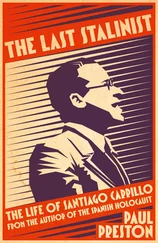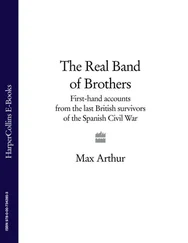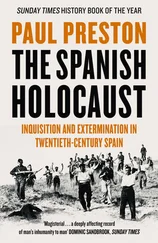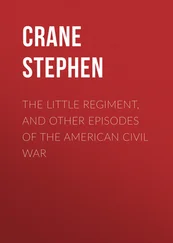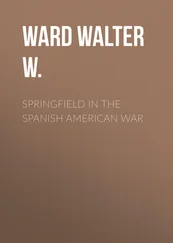The first violent working-class protest, however, came from the anarchists. With irresponsible naïvety, an uprising was called for 8 December 1933. However, the government had been forewarned of the anarcho-syndicalists’ plans and quickly declared a state of emergency. Leaders of the CNT and the FAI were arrested, press censorship was imposed and syndicates were closed down. In traditionally anarchist areas, Aragón, the Rioja, Catalonia, the Levante, parts of Andalusia and Galicia, there were sporadic strikes, some trains were blown up and Civil Guard posts were assaulted. The movement was quickly over in Barcelona, Madrid and Valencia. In the Aragónese capital Zaragoza, however, the rising did get off the ground. Workers raised barricades, attacked public buildings and engaged in street fighting. The response of the government was to send in the army, which took four days with the aid of tanks to crush the insurrection.
Violent incidents involving the CNT diverted attention from the growing problem of malnutrition in the southern provinces. This was a consequence not only of the determination of landowners to slash wages and refuse work to union members but also of significant rises in the price of basic necessities. The Radical government had removed controls on the price of bread and it had risen by 25 to 70 per cent. Demonstrations by starving women, children and the aged calling for bread became a frequent sight. The spread of hunger in the south was also mirrored in the intensification of militancy within the principal landworkers’ union, the FNTT. Its president, the moderate Lucio Martínez Gil, was replaced by one of the more radical young followers of Largo Caballero, Ricardo Zabalza Elorga. At the end of 1933, then, the Socialist leaders were faced with a rising tide of mass militancy, which was a consequence both of the employers’ offensive and their own feeling of bitterness at the perceived unfairness of electoral defeat. Largo Caballero reacted by intensifying his revolutionary threats although his noisy rhetoric was not matched by any serious revolutionary intentions. His was verbal revolutionism both to satisfy rank-and-file aspirations and to pressure Alcalá Zamora to call new elections. It was a dangerous game, since, if the President did not succumb to such pressure, the Socialists would be left with the choice of stepping up their threats or losing credibility with their own militants. The resulting situation could benefit only the CEDA.
With a pliant Radical government in power, the success of Acción Popular’s ‘accidentalist’ tactics could hardly have been more apparent. ‘Catastrophism’ was for the moment eclipsed. Nevertheless, the extreme right remained unconvinced by Gil Robles’ democratic tactic and so continued to prepare for violence. Carlists were collecting arms and drilling in the north and the spring of 1934 saw Fal Conde, the movement’s secretary, recruiting volunteers in Andalusia. In March, representatives of both the Carlists and the Alfonsine monarchist party, Renovación Española, led by Antonio Goicoechea, went to see Mussolini who promised money and arms for a rising. Both groups were convinced that even a strong rightist government did not constitute an adequate long-term guarantee for their interests, because it would be subject to the whims of the electorate in a still democratic Republic. In May 1934, the monarchists’ most dynamic and charismatic leader, José Calvo Sotelo, returned after three years exile to take over the leadership from Antonio Goicoechea. Henceforth, the monarchist press, in addition to abusing Gil Robles’ weakness, began increasingly to talk of the conquest of the state as the only sure road to the creation of a new authoritarian, corporative regime.
Even Gil Robles was having trouble controlling his forces. His youth movement, the Juventud de Acción Popular (JAP), was seduced by the German and Italian examples. Great Fascist-style rallies were held at which Gil Robles was hailed with the cry ‘¡Jefe! ¡Jefe! ¡Jefe!’ (the Spanish equivalent of Duce ) in the hope that he might start a ‘March on Madrid’ to seize power. Monarchist hopes, however, centred increasingly on the openly Fascist group of José Antonio Primo de Rivera, Falange Española, as a potential source of shock troops against the left. The Falange had been founded in October 1933 with monarchist subsidies. As a landowner, an aristocrat and well-known socialite, José Antonio Primo de Rivera served as a guarantee to the upper classes that Spanish fascism would not get out of their control in the way of its German and Italian equivalents. Falange Española merged in 1934 with the pro-Nazi Juntas de Ofensiva Nacional-Sindicalista of the pro-German Ramiro Ledesma Ramos, becoming Falange Española de las JONS. Perpetually short of funds, the party remained during the Republican period essentially a small student group preaching a utopian form of violent nationalist revolution. The Falangist leader’s cult of violence facilitated the destabilization of the politics of the Second Republic. His blue-shirted militias, with their Roman salutes and their ritual chants of ¡ARRIBA ESPAÑA! and ¡ESPAÑA! ¡UNA! ¡ESPAÑA! ¡LIBRE! ¡ESPAÑA! ¡GRANDE! , aped Nazi and Fascist models. From 1933 to 1936, FE de las JONS functioned as the cannon fodder of the haute bourgeoisie , provoking street brawls and helping to generate the lawlessness which, exaggerated by the right-wing press, was used to justify the military rising. Its importance lay in the role played by its political vandalism in screwing up the tension which would eventually erupt into the Civil War.
The left was very aware of such developments and was determined to avoid the fate of the German and Austrian left. As 1934 progressed there were growing numbers of street battles between left and right. Events within the orthodox political arena did little to cool tempers. Lerroux resigned in April after Alcalá Zamora had hesitated about signing an amnesty bill which reinstated the officers involved in the Sanjurjo rising of 1932. Socialists and Republicans alike felt that the government was signalling to the army that it could make a coup whenever it disliked the political situation. The left was already suspicious of the government’s reliance on CEDA votes, since Gil Robles continued to refuse to swear his loyalty to the Republic. Moreover, since he made it quite clear that when he gained power he would change the Constitution, the left was coming to believe that strong action was necessary to prevent him doing so. In fact, even if Gil Robles was not quite as extreme as the left believed him to be, he managed to convey the impression that the Radical government, backed with CEDA votes, was intent on dismantling the progressive, reforming Republic that had been created in 1931.
In this context, it was difficult for the Socialist leadership to hold back its followers. Largo Caballero tended to give way to the revolutionary impatience of the masses, although his rhetoric, which they cheered to the echo, was unspecific and consisted largely of Marxist platitudes. No concrete relation to the contemporary political scene was ever made in Largo Caballero’s speeches of early 1934 and no timetable for the future revolution was ever given. However, rank-and-file pressure for the radicalization of the Socialist movement, particularly from its youth movement, the Federatión de Juventudes Socialistas (FJS), and its Madrid organization, the Agrupación Socialista Madrileña, developed throughout 1934. This led to important divisions within the PSOE. The right-wing of the party, led by the professor of logic Julián Besteiro, tried several tactics to slow down the process of bolshevization which was taking place within the party. This merely earned Besteiro the vehement hostility of the radical youth. The centre, led by the ever-pragmatic Indalecio Prieto, reluctantly went along with the revolutionary tactic out of party loyalty. The young followers of Largo Caballero came to dominate the party and the UGT, with the organizations of the Socialist movement falling into their hands in quick succession.
Читать дальше



